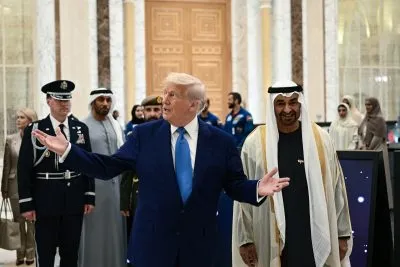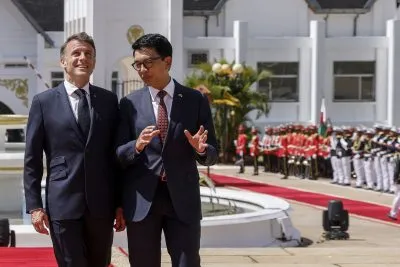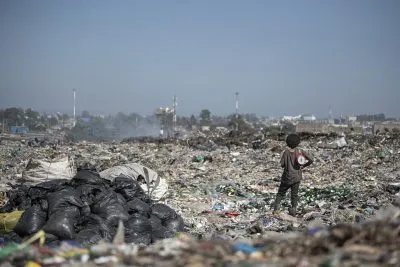On the outskirts of Johannesburg stands Kelvin Power Station, a collection of giant coal-fired generators. The 600 MW plant, owned by local banks Nedbank and Investec, can provide up to 20% of Johannesburg’s power requirements when operating at full capacity.
There are 18 such power plants across South Africa, located mainly in the northeast Mpumalanga province where the largest coal reserves are found. Coal makes up 77% of South Africa’s electricity capacity and over the decades it has been the fuel that has driven the economy of Africa’s most industrialised and technologically advanced country. However, in 2018 South Africa was the world’s 13th largest carbon dioxide emitter, on a par with Brazil, which has nearly four times as many people.
Added to the environmental concerns, power in South Africa is both expensive and unreliable. The state utility Eskom frequently switches off power to large cities like Johannesburg and Cape Town so as not to overwhelm the grid while demand outstrips supply. This is one of the biggest problems for South Africa’s private sector, experts say.
“Even though the government has come up with good ideas around economic reform there needs to be a real focus on stabilising our energy sector as we have to know that they can provide energy for growth,” says Peter Taylor, CEO at Citi South Africa.
Energy reform
The government has taken several important steps to wean South Africa off coal, though critics say that they have not gone far enough from an environmental perspective.
The 2019 Integrated Resource Plan (IRP) hopes to gradually raise renewables to 24.7% of the energy mix by 2030, reducing coal’s contribution to the energy mix to 43%. With banks hesitant to finance fossil fuel projects, and renewables becoming more efficient and cheaper, there is great opportunity for local and foreign investment in South Africa’s green energy mix.
In real terms, the government’s plan sets the stage for energy companies to build an extra 20,400 MW of solar and wind energy in the next 10 years. Coal plants will gradually be retired, decommissioning 10,500 MW by 2030, the year from which no new coal plants will be built.
South Africa will launch renewable energy tenders in 2021 as part of the fifth window of the Renewable Energy Independent Power Producer Programme (REIPPP), which was launched in 2011 to encourage independent power producers (IPPs) to invest in green technology. The regulator approved a 6.4 GW tender for wind and solar in September.
“There’s a big appetite for renewables both from a demand point of view and an investment point of view,” says Jarredine Morris, energy and environmental manager at Business Unity South Africa.
Another crucial reform is that municipalities are now allowed to procure or generate their own electricity rather than being forced to buy it from Eskom. Municipalities have long argued that they should be able to source their own power like the private sector.
Both Johannesburg and Cape Town can now embark on long-standing green transition plans, with the bulk of the new power coming from solar and landfill gas technology. Along with turbines, there is also a huge opportunity for battery providers as wind and solar energy needs to be stored and redistributed to meet demand.
Related articles
Eskom’s future
However, the government has said that coal will continue to play an “integral” part of South Africa’s energy mix, as it cannot bring new sources of power online fast enough to be able decommission all the coal plants.
“To be honest, I wish we could run on renewables, but it is not possible,” says Leon Louw, a mining expert based in Johannesburg. “The government keeps talking about electrification – even now we don’t have electricity. Without coal we are going to struggle. For the next 20 years, we will still run on coal because all our power stations run on coal.”
Nonetheless, coal’s grip on South Africa is waning and the industry is undergoing a period of immense transition. The government will reform Eskom, which is currently in $32bn of debt, by “unbundling” the utility into three separate units for generation, transmission and distribution.
It hopes that the restructuring will remove Eskom’s near-monopoly on the market and allow other IPPs to compete, while changing the distribution model so that more power can be procured from renewable sources.
Eskom supplies more than 90% of South Africa’s electricity. The unbundling is a mammoth task. CEO Andre de Ruyter has said that the process should not be rushed and needs to be “managed properly.”
Morgane Martin, an independent renewable energy consultant based in Johannesburg, says that coal lobbies have opposed the transition in the past as the sector employs hundreds of thousands of people.
“South Africa relies on mining and coal and there are many jobs at stake,” she says. “You have to ensure that there is some sort of transition for people working in the coal mines, especially in the Mpumalanga region.”
There is also opposition from commercial stakeholders in the coal value chain. South Africa’s mines still have plenty of coal and the African nation was the world’s seventh largest exporter of the fossil fuel in 2019, at a value of $4.8bn. The sector is made up of a mix of junior mining companies and big players like UK-headquartered Anglo American, which sell to Eskom or export to global markets including India and China.
The industry also has a reputation for corruption. In 2006, in an early step on their journey to securing a hold on the levers of power from behind the scenes – a process referred to as “state capture” – the Gupta brothers founded Tegeta Exploration and Resources, a mining company. As a result, they became involved with Eskom and were able to meet and cultivate more leading politicians.
Other sources of energy
South Africa is also looking to natural gas as a less harmful fossil fuel that can quickly add power to the grid and help ease the transition away from coal.
French energy giant Total has made two “giant” offshore gas discoveries in South Africa in the past two years, fuelling the prospect that gas could replace coal to fire the country’s power stations.
In 2019, Total announced that the “world-class” Brulpadda well could supply South Africa with the energy equivalent of a billion barrels of oil. The discovery is expected to boost investment in gas infrastructure as the public and private sector begin to see it as a viable source of energy.
South Africa also has two nuclear reactors operated by Eskom, generating around 6% of total electricity. Former president Jacob Zuma was keen to build a fleet of nuclear power stations and signed an agreement with Russia to build a massive new plant, though the courts later ruled that the deal was illegal. The current administration shows less enthusiasm for nuclear energy, although it plans to instal 1 GW of new nuclear capacity by 2030.
Read more on South Africa in our special report: South Africa – eyes on the future but mired in the present
Want to continue reading? Subscribe today.
You've read all your free articles for this month! Subscribe now to enjoy full access to our content.
Digital Monthly
£8.00 / month
Receive full unlimited access to our articles, opinions, podcasts and more.
Digital Yearly
£70.00 / year
Our best value offer - save £26 and gain access to all of our digital content for an entire year!

 Sign in with Google
Sign in with Google 






